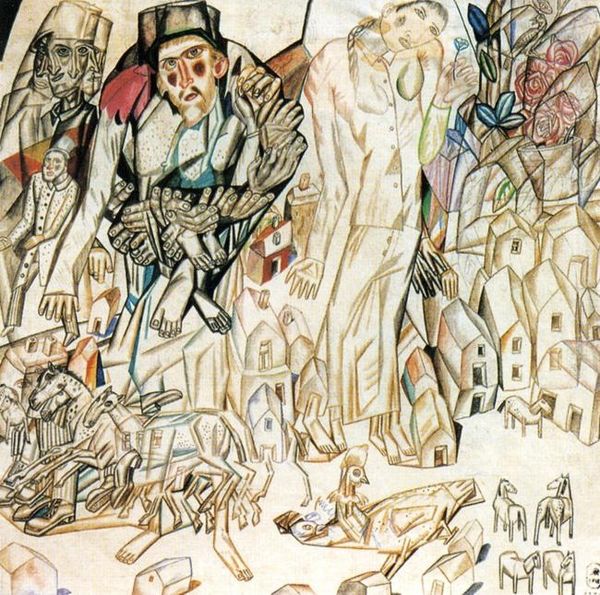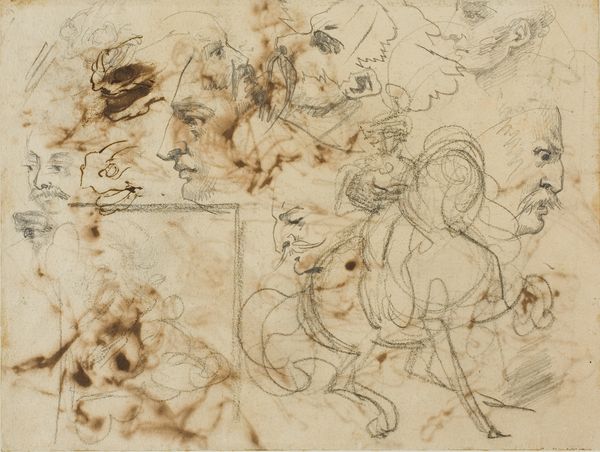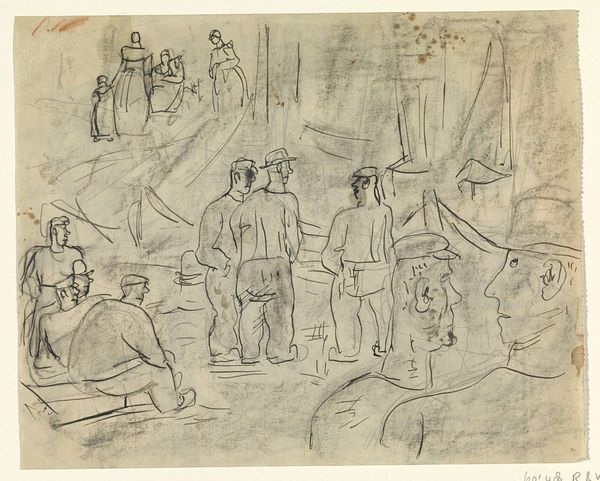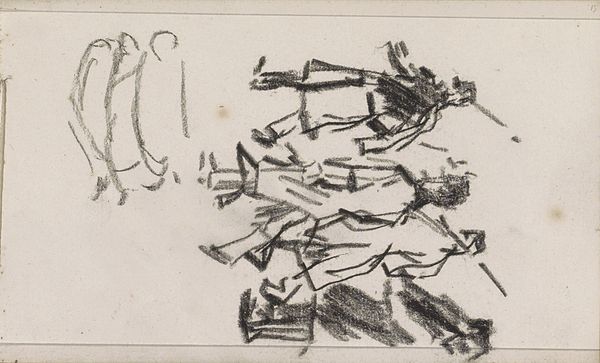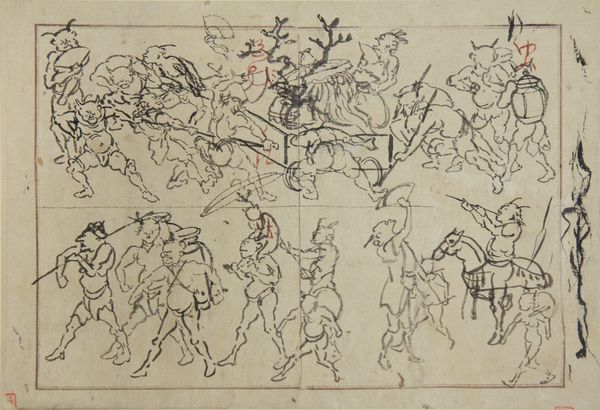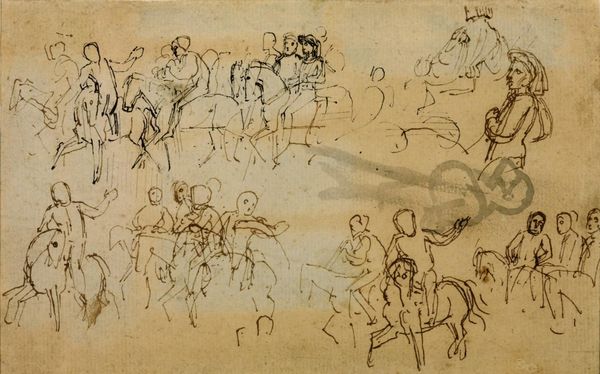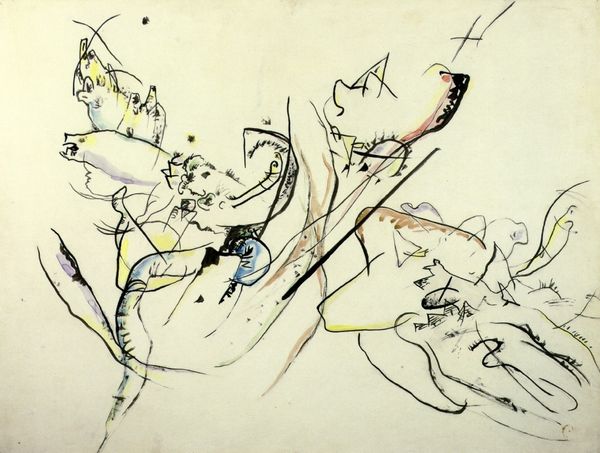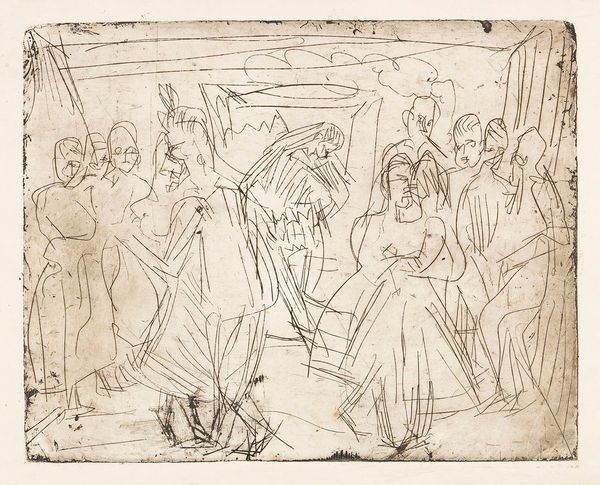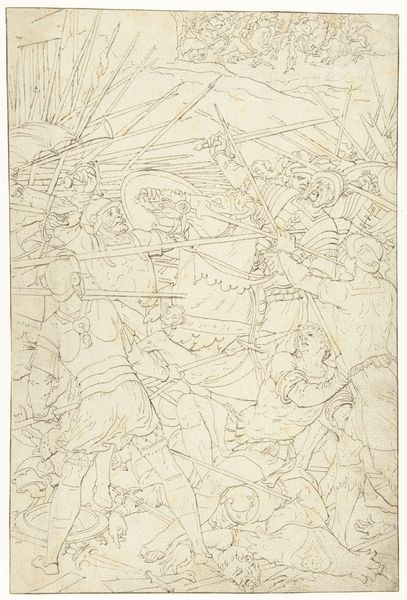
Study for The Liver is the Cock's Comb 1943
0:00
0:00
arshilegorky
Museum of Contemporary Art (MOCA), Los Angeles, CA, US
drawing, coloured-pencil, paper, pastel
#
abstract-expressionism
#
drawing
#
coloured-pencil
#
paper
#
coloured pencil
#
abstraction
#
pastel
#
watercolor
Copyright: Public domain
Editor: This is "Study for The Liver is the Cock's Comb" by Arshile Gorky, created in 1943, a colored pencil drawing on paper. It feels almost like looking at a dreamscape, fragmented and surreal. What do you see in this piece? Curator: Dreams are powerful carriers of cultural memory. I see a collection of primal symbols here, wrestling with each other on the page. Consider the liver, often associated with emotions and intuition. And the cock's comb – a symbol of virility and aggression. What happens when you put those two symbols into dialogue, into conflict? Editor: It's like a battle of instinct versus emotion. But the forms are so fluid, it's hard to pin them down. Curator: Exactly. Gorky is tapping into something ancient. These aren't just anatomical forms, they are archetypes. They resonate with universal experiences of desire, frustration, and transformation. Think about how these forms echo the imagery found in prehistoric cave paintings – an attempt to capture something elusive and powerful about the human experience. What connections can you find between the drawing's color choices and overall effect? Editor: The reds and blues feel like bursts of energy, maybe even pain, cutting through the muted grays and browns. Like these elemental forces you’re mentioning struggling to emerge. Curator: Precisely. That contrast heightens the emotional intensity and reinforces the idea of a struggle. Gorky isn't just drawing shapes; he’s building a visual language to access our collective unconscious. Editor: I never thought of abstract art as speaking in a symbolic language before. This piece makes me wonder what other secrets are hiding in plain sight in other abstract works. Curator: Indeed! It prompts us to remember that even seemingly abstract forms can carry immense emotional and cultural weight. A fantastic start for today's topic!
Comments
No comments
Be the first to comment and join the conversation on the ultimate creative platform.
